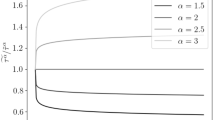Abstract
Non-physiologic turbulent flow occurs in medical cardiovascular devices resulting in hemodynamic stresses that may damage red blood cells (RBC) and cause hemolysis. Hemolysis was previously thought to result from Reynolds shear stress (RSS) in turbulent flows. A more recent hypothesis suggests that turbulent viscous shear stresses (TVSS) at spatial scales similar in size to RBCs are related to their damage. We applied two-dimensional digital particle image velocimetry to measure the flow field of a free-submerged axisymmetric jet that was utilized to hemolyze porcine RBCs in selected locations. Assuming a dynamic equilibrium for the sub-grid scale (SGS) energy flux between the resolved and the sub-grid scales, the SGS energy flux was calculated from the strain rate tensor computed from the resolved velocity fields. The SGS stress was determined by the Smagorinsky model, from which the turbulence dissipation rate and then TVSS were estimated. Our results showed the hemolytic threshold of the Reynolds stresses was up to 517 Pa, and the TVSSs were at least an order of magnitude less than the RSS. The results provide further insight into the relationship between turbulence and RBC damage.



Similar content being viewed by others
References
Hellums JD, Brown CH. Blood cell damage by mechanical forces. In: Hwang NHC, Normann NA, editors. Cardiovascular flow dynamics and measurements. Baltimore: University Park Press; 1977. p. 799–823.
Nevaril CG, Lynch EC, Alfrey CP, Hellums JD. Erythrocyte damage and destruction induced by shearing stress. J Lab Clin Med. 1968;71:784–90.
Leverett LB, Hellums JD, Alfrey CP, Lynch EC. Red blood cell damage by shearstress. Biophys J. 1972;12:257–73.
Sutera SP, Croce PA, Mehrjardi MH. Hemolysis and subhemolytic alterations of human RBC induced by turbulent shear flow. Trans Am Soc Artif Int Organs. 1972;18:335–41.
Williams AR, Hughes DE, Nyborg WL. Hemolysis near a transversely oscillating wire. Science. 1970;169:871–3.
Rooney JA. Hemolysis near an ultrasonically pulsating gas bubble. Science. 1970;169:869–71.
Forstrom RJ. A new measure of erythrocyte membrane strength: the jet fragility test. PhD. thesis, University of Minnesota; 1969.
Sutera SP, Mehrjardi MH. Deformation and fragmentation of human red blood cells in turbulent shear flow. Biophys J. 1975;15:1–10.
Sallam AH, Hwang NHC. Human red blood cell hemolysis in turbulent shear flow: contributions of Reynolds shear stresses. Biorheology. 1984;21:783–97.
Grigioni M, Daniele C, D’Avenio G, Barbaro V. A discussion on the threshold limit for hemolysis related to Reynolds shear stress. J Biomech. 1999;32:1107–12.
Lu PC, Lai HC, Liu JS. A reevaluation and discussion on the threshold limit for hemolysis in a turbulent shear flow. J Biomech. 2001;34:1361–4.
Tennekes H, Lumley JL. A first course in turbulence. Cambridge: The MIT Press; 1972.
Hinze JD. Turbulence. 2nd ed. New York: McGraw-Hill Book Co.; 1975.
Jones SA. A relationship between Reynolds stresses and viscous dissipation: implications to red cell damage. Ann Biomed Eng. 1995;23:21–8.
Li CP, Lo CW, Lu PC. Estimation of viscous dissipative stresses induced by a mechanical heart valve using PIV data. Ann Biomed Eng. 2010;38:903–16.
Quinlan NJ, Dooley PN. Models of flow-induced loading on blood cells in laminar and turbulent flow, with application to cardiovascular device flow. Ann Biomed Eng. 2007;35:1347–56.
Liu JS, Lu PC, Chu SH. Turbulence characteristics downstream of bileaflet aortic valva prostheses. J Biomech Eng. 2000;122:118–24.
Antiga L, Steinman DA. Rethinking turbulence in blood. Biorheology. 2009;46:77–81.
Sheng J, Meng H, Fox RO. A large eddy PIV method for turbulence dissipation rate estimation. Chem Eng Sci. 2000;55:4423–34.
Meyers J, Sagaut P. On the model coefficients for the standard and the variational multi-scale Smagorinsky model. J Fluid Mech. 2006;569:287–319.
Hart DP. PIV error correction. Exp Fluids. 2000;29:13–22.
Lavoie P, Avallone G, Gregorio FD, Romano GP, Antonia RA. Spatial resolution of PIV for the measurement of turbulence. Exp Fluids. 2007;43:39–51.
Baldwin JT, Deutsch S, Petrie HL, Tarbell JM. Determination of principal Reynolds stresses in pulsatile flows after elliptical filtering of discrete velocity measurements. J Biomech Eng. 1993;115:396–403.
Liu S, Menenveau C, Katz J. On the properties of similarity subgrid-scale models as deduced from measurements in a turbulence jet. J Fluid Mech. 1994;275:83–119.
Smagorinsky J. General circulation experiments with the primitive equation I the basic experiment. Mon Weather Rev. 1963;91:99–164.
Zhang T, Fang HB, Jarvik R, Griffith BP, Wu ZJ. Study of the shear-induced blood damage in different species. ASAIO J. 2011;57:122.
Acknowledgments
This work was supported by the National Science Council of the Republic of China Grant NSC 100-2221-E-032-012 and we thank the Division of Medical Engineering, National Health Research Institutes of the Republic of China for providing their technical assistance and primary laboratory equipment.
Conflict of interest
The authors of this article have no conflicts of interest to disclose.
Author information
Authors and Affiliations
Corresponding authors
Rights and permissions
About this article
Cite this article
Yen, JH., Chen, SF., Chern, MK. et al. The effect of turbulent viscous shear stress on red blood cell hemolysis. J Artif Organs 17, 178–185 (2014). https://doi.org/10.1007/s10047-014-0755-3
Received:
Accepted:
Published:
Issue Date:
DOI: https://doi.org/10.1007/s10047-014-0755-3




